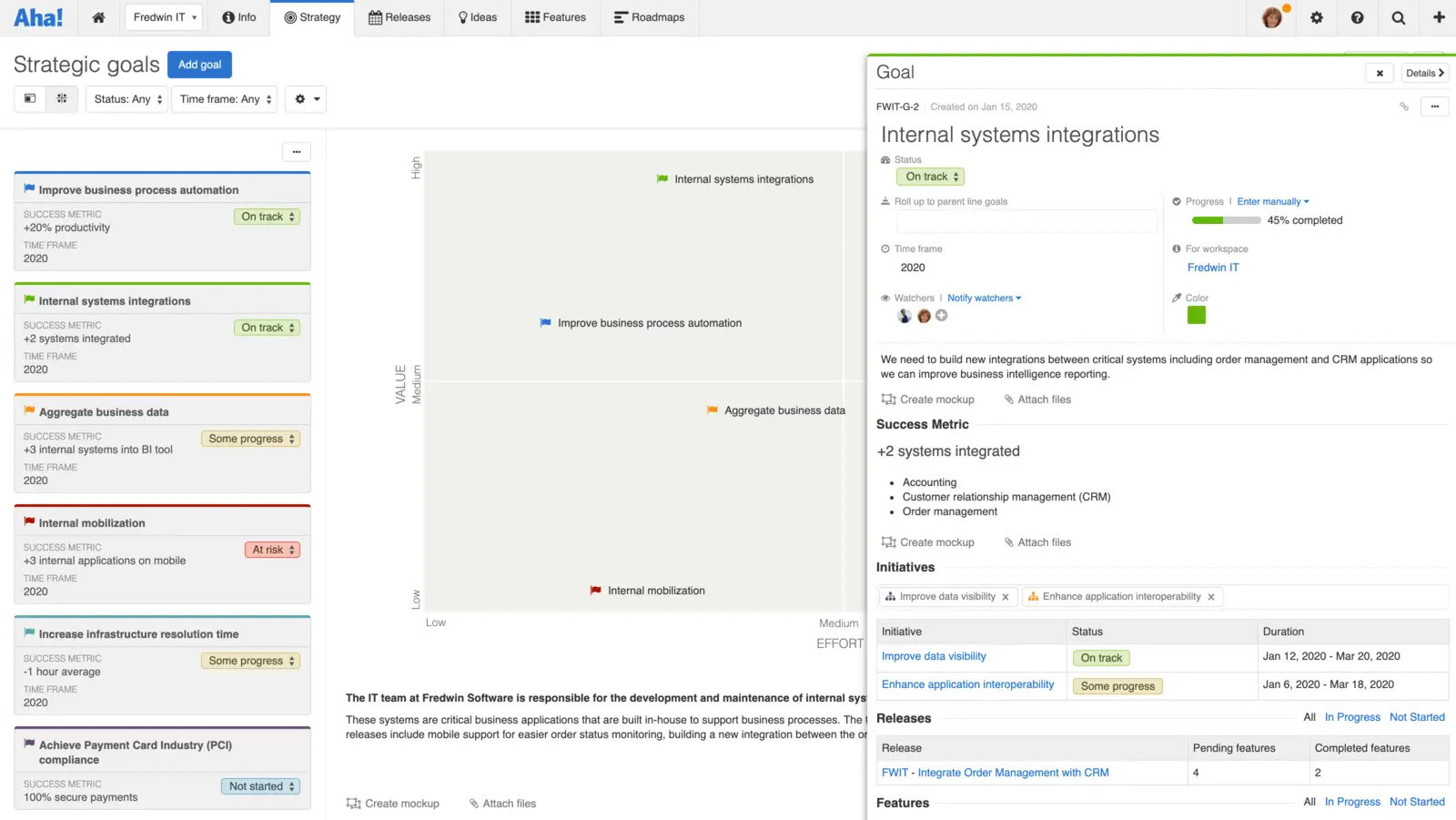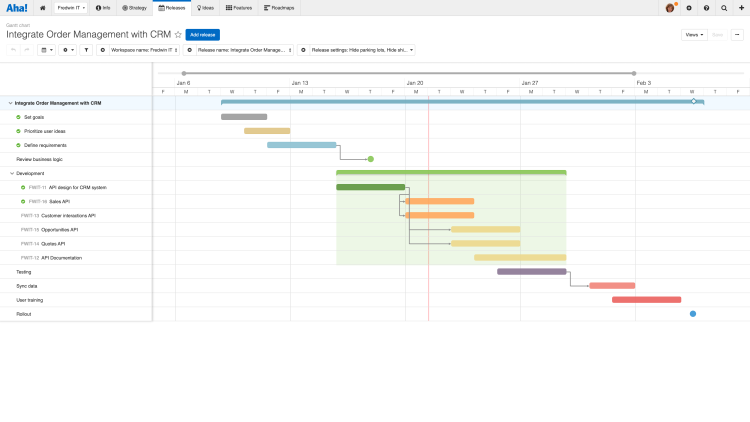What is the difference between an IT strategy and an IT plan?
Strategy vs. plan. People often use the terms interchangeably. It is easy to see why — both concepts refer to the work of achieving an end. But although IT strategies and plans are related, they are not the same thing. As an IT leader, first you must define the strategy and overall direction for your team. Then, you can craft the detailed plan to bolster that strategy.
By understanding how strategy and plans work together, you can propel results and actually deliver on your vision for the IT organization. You can better prioritize the work the brings real value and guide your team to make the right decisions about new technology, processes, and future areas of innovation.
What is an IT strategy?
An IT strategy describes what you want to achieve as a team or department and how it supports the business. It involves defining your overall vision and the goals and large themes of work that will help you get there. Setting and communicating the strategy keeps everyone focused on the desired end state.
Create your own IT strategy
An IT strategy includes the following components:
Vision | The essence of what you want to achieve as an IT team. For instance, you might focus your vision statement around what your team delivers to the organization: "Our vision is to provide production-ready software and technology to our company — so teammates can do their jobs with ease." |
Customers | Types of customers that you serve — can be both internal and external customers. Outline the teams, customers types, or use cases that you build solutions for. This exercise is similar to building customer personas — you might have one set for internal customers and another company-wide set for external customers. |
Competitors | Other IT organizations within your same industry or market. Take time to discover how competitors serve their customers and identify your own differentiators. |
Business model | Elements of your organization or IT department that impact how you deliver technology. These could be related to team skills, strengths and weaknesses, values, methodologies, or anything else that you deem important to your strategic vision. |
Goals | Time-bound, measurable objectives that describe how you plan to make progress towards your vision. Goals highlight how you will support the company to accelerate growth, productivity, and overall success. They should have clearly defined success metrics. |
Initiatives | Major themes of work you need to accomplish to meet your goals. Initiatives are typically comprised of smaller features, activities, or tasks. Some initiatives may be department-wide, while others are narrower — such as a compliance initiative that is owned by the security team. |
In the example below, a goal within the year is to drive technology integrations in order to improve business intelligence reporting. Initiatives that will help deliver on this goal include improving data visibility and enhancing application interoperability.

These goals and initiatives were defined within Aha! Roadmaps.
Initiatives can be further broken down into epics or features — the specific capabilities or functionality that you will deliver to end-users. Epics typically span multiple releases.
Whatever your team calls these layers of work, what is important is that you have a strategic structure that underpins them. Doing so helps you connect IT goals and initiatives back up to company-level goals and initiatives.
What is an IT plan?
An IT plan establishes the details of when and how you will achieve your strategic objectives. While your strategy will remain fairly fixed, your plans will be dynamic. You will check in and adjust the plans as you go to make sure that the details of the work help you achieve your broader goals.
An IT plan includes the following components:
Roadmap | What you will deliver, when you will deliver it, and why matters The roadmap visualizes your goals and initiatives and progress towards achieving them. |
Timeline | Dates you will deliver the work. Your roadmap will include high-level dates. The IT plan can also drill into further details — start and end dates, important milestones, and cross-functional dependencies |
Activities, features, or tasks | Specific details about what you will deliver. These include features, requirements, user stories, and other tasks that will help you complete your initiatives. |
Release schedule | Documented release process for the entire systems development life cycle. From planning to deployment, develop a shared understanding of how you will deliver new experiences to customers. |
Resources | People and budget required to achieve your goals. Your ability to estimate the resources you need to complete the work grounds the team in reality. |
Roles and workflows | Roles, responsibilities, and processes that help you get work done. It can be helpful to define roles and workflows during strategic planning periods and then revisit them when new initiatives get underway. |
The Gantt chart below shows a timeline view of an integration plan for an order management platform and customer relationship management (CRM) app. Each phase of the plan is represented by a colored bar — with dots representing important milestones and gray arrows illustrating dependencies.

This is a Gantt chart created in Aha! Roadmaps.
Creating a well-defined strategy and a plan to achieve it is complex. In addition to defining the goals, initiatives, and detailed work, you need to be able to proactively spot weaknesses, determine the causes, and swiftly adjust. It takes a lot of effort to deliver on your plans without losing focus or velocity.
This is why many IT managers use purpose-built roadmapping tools like Aha! Roadmaps to define and implement strategic plans. A technology roadmap helps you visualize your goals and the timeline for completing the supporting work.
IT teams need great technology, too — sign up for a free 30-day trial of Aha! Roadmaps to visualize your strategy, manage ideas, build an IT roadmap, and measure results all in one place.